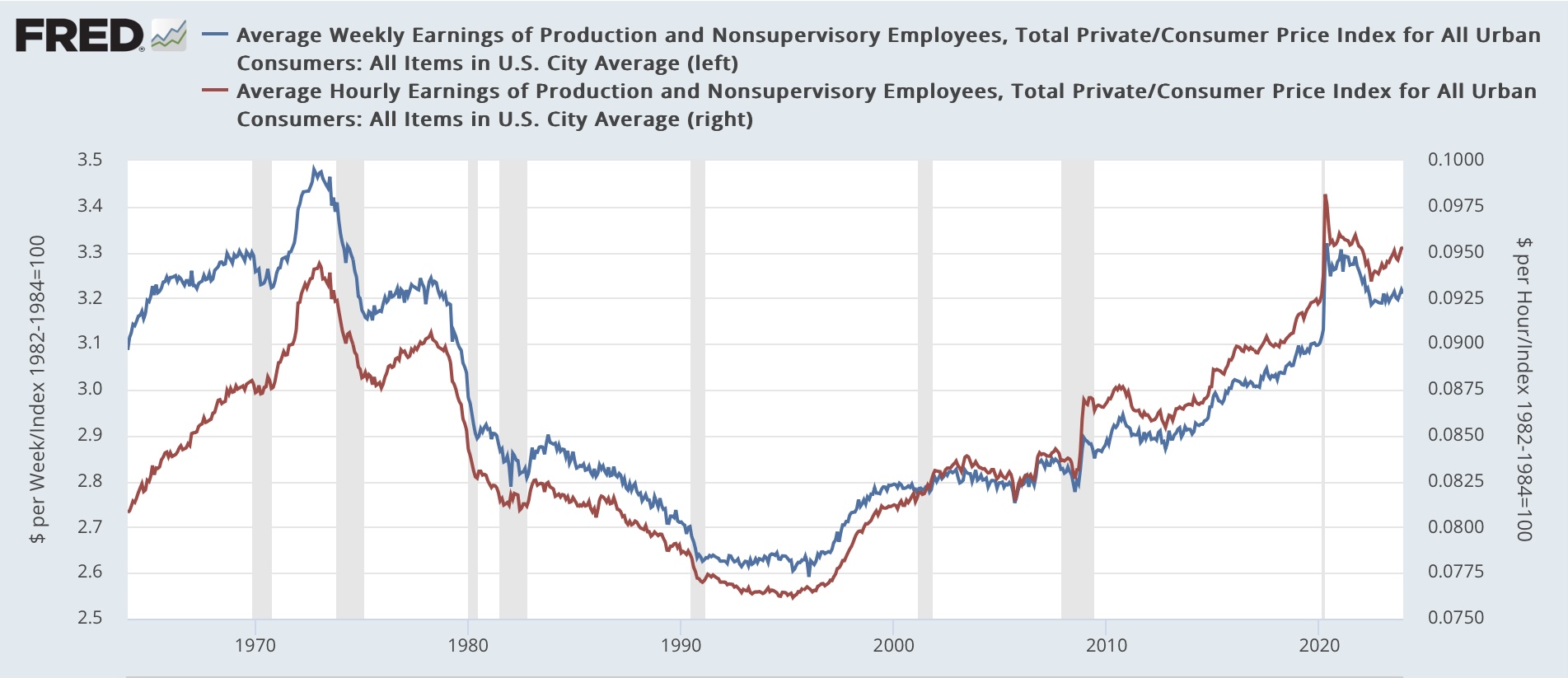Are Working Class Wages Really Still A Malady?
Via Kevin Drum, NY Times columnist Nick Kristof says, "There isn’t a good term for the bundle of pathologies that have afflicted working-class Americans . . . ."
“One gauge of how many Americans are struggling is that average weekly nonsupervisory wages, a metric for blue-collar earnings, were lower in the first half of 2023 than they had been (adjusted for inflation) in the first half of 1969. That’s not a misprint.”
Drum says that’s not true if you use the PCE deflator rather than CPI. But I’m dissatisfied for another reason - I don’t think weekly measures are appropriate.
Here is the graph of Kristof’s metric:
(Click on image to enlarge)

It does indeed show that weekly wages, even as of last month, were equal to wages in most of the latter part of the 1960s and early 1970s.
But the problem is that the work week itself has gotten much shorter in the past half century, declining from an average a little below 39 hours in the 1960s to under 34 hours in the past 15 years:
(Click on image to enlarge)

It’s no wonder that, in real terms, people working 5 hours less per week might be earning less.
Indeed, as I have pointed out many times, real average *hourly* wages for nonsupervisory workers (red in the graph below) made a new all-time record earlier in the post-pandemic period, and are still higher than at any point before the pandemic now:
(Click on image to enlarge)

But let me make a further comparison with real aggregate payrolls for nonsupervisory workers. In the below graph I also divide payrolls by the number of workers on payrolls as well as by inflation (gold):
(Click on image to enlarge)

Real payroll per worker as of last month was within 1% of its value 50+ years ago in the late 1960s. If the economy continues to expand this year, there’s a pretty good chance it will surpass that level.
Bear in mind that the biggest reason of the decline in wages was the entrance of the huge baby boom into the jobs market, including for the first time most women. Once that was finally fully digested (in the 1990s) real wages started to rise again.
Real wages now are 20% - 25% higher now than they were at their nadir in the 1990s. There are certainly maladies affecting the working class, and over the long term wages have been an issue, but certainly not recently.
More By This Author:
Existing Home Sales Approach Bottom Near 30-Year Lows
Housing Construction Changes Little In December
Jobless Claims: Bar One Week, The Lowest Number Of Layoffs In Over Half A Century
Disclaimer: This blog contains opinions and observations. It is not professional advice in any way, shape or form and should not be construed that way. In other words, buyer beware.



